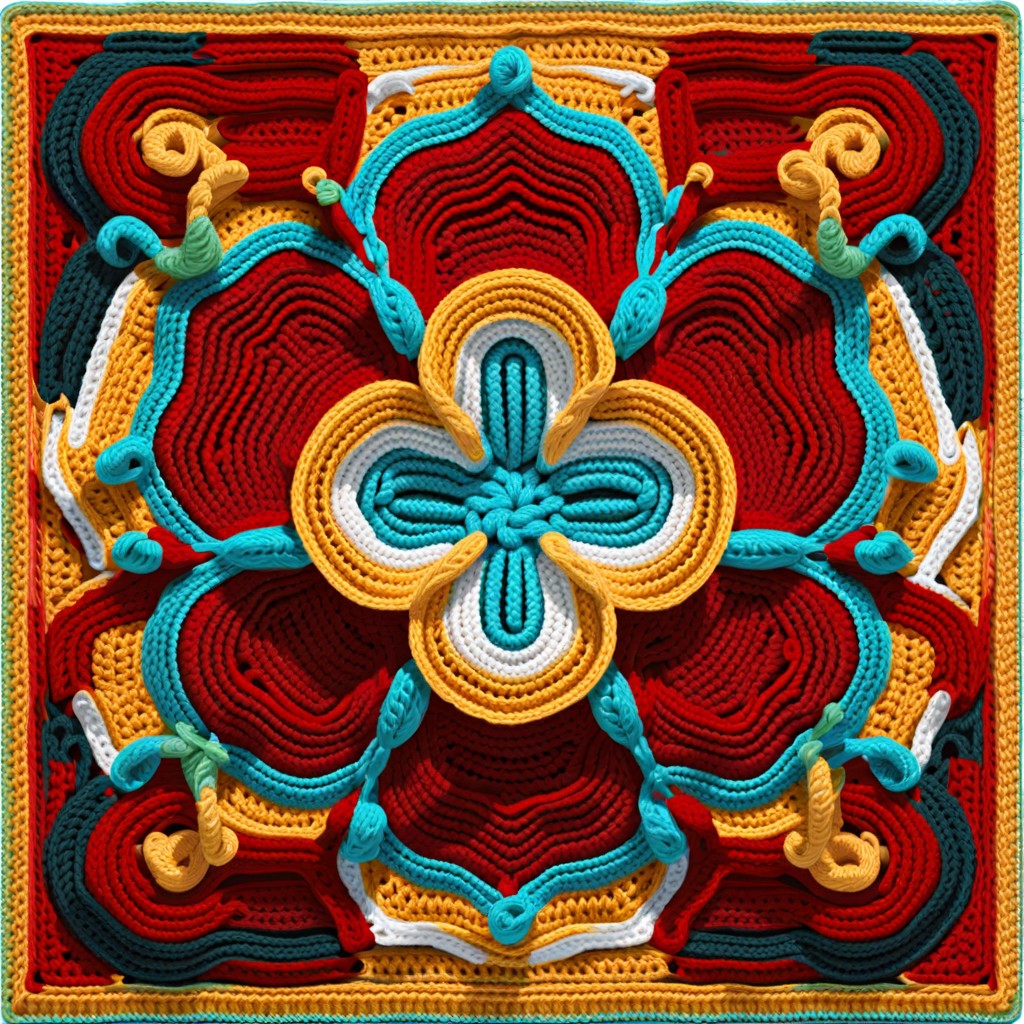Want to know what “dec” means in crochet?
Key takeaways:
- “Dec” stands for “decrease” in crochet patterns.
- Dec involves skipping stitches or combining stitches into one.
- Dec is a simple technique with big effects in shaping.
- Different types of decrease stitches: sc2tog, dc2tog, hdc2tog, invisible decrease.
- Decreases are important for shaping hats and creating symmetry.
What Does “dec” Stand For in a Crochet Pattern?

In crochet patterns, “dec” refers to “decrease.” It’s a method used to reduce the number of stitches. Need your project to taper? Shaping a cozy hat? You’ll want to master decreases.
- Here’s the deal:
- Dec can involve skipping stitches.
- It can also mean combining two or more stitches into a single stitch.
- Despite its intimidating name, it’s a pretty simple technique with big effects.
Adding a decrease helps in achieving different shapes and fits for various crochet projects.
Understanding Dec in Crochet
To grasp dec, picture it as the magical moment in your crochet journey where fewer stitches make more sense! Essentially, it’s about taking two (or more) stitches and turning them into one. Voila, stitch Houdini!
Here’s the gist:
- Collapse for a Cause: You’re combining stitches to shape your project, whether it’s narrowing a hat or shaping an amigurumi leg.
- Invisible but Powerful: Properly done, the decrease will be barely noticeable, yet it totally transforms your piece.
- Follow the Recipe: Your pattern will guide you on where and how to decrease. Trust it, like a treasure map.
- Hook Happy: Different hooks and yarns can slightly change how your decrease looks. Experiment and find your groove.
So, the next time you see “dec” in your pattern, know it’s a signal for stitch sorcery at work, sculpting your yarn into awesome shapes!
Types of Decrease Stitches
Single crochet decrease (sc2tog) is a common decrease. You simply crochet two stitches together to make one. It’s like merging two lanes on a highway—smooth and simple!
Double crochet decrease (dc2tog) follows a similar idea but uses double crochet stitches. Think of it as your crochet hook doing a little dance, two steps forward, one cozy stitch back.
Half double crochet decrease (hdc2tog) falls somewhere in between—halfway, actually. You start like a half double crochet but loop through and finish like a double crochet, just stealing a little space.
There’s also the invisible decrease, mostly used in amigurumi. This technique hides the decrease, making it less noticeable and your stuffed animals less lumpy. Sneaky, right?
Simply put, each type works the same way: join two stitches into one, creating a delightful little shape shift in your project.
Decreasing in Hat Patterns
In hat patterns, swapping crowd-pleaser stitches for decreases is key. Your cozy beanies and snug caps rely on them for shaping. Reducing stitches brings everything together at the crown, making it fit like a glove. Or, well, a hat.
- Consistent Placement: Decreases usually occur at regular intervals to keep the hat symmetrical. Think of them as the crowning touch that ensures your hat doesn’t look lopsided.
- Types of Decreases: The two common types are single crochet decreases (sc2tog) and double crochet decreases (dc2tog). They discreetly slim down your stitch count without anyone the wiser.
- Pattern Instructions: Patterns will instruct exactly where and when to decrease. Follow them like a crochet GPS and you’ll navigate your way to hat perfection.
- Smooth Transition: Decrease stitches blend seamlessly with the rest of the pattern. No awkward bumps, just a smooth slope leading to the crown.
So next time you crochet a hat, remember—those decreases are the unsung heroes of headwear! A round of applause for the clever little stitch change.
Decrease Vs Increase Stitches
Decrease stitches (dec) essentially reduce the number of stitches in a row, making your project narrower or more fitted. They’re like the sneaky ninjas of the crochet world, silently trimming the fat.
Increase stitches, on the other hand, are the opposite. They add more stitches, expanding your project. Imagine them as little stitch cheerleaders, rallying for more stitches to join the party.
Here’s how they stack up:
- Direction: Decreases make your piece tighter, increases make it broader.
- Usage: Decreases are great for tapering shapes, like the top of a hat. Increases are perfect for shaping out, like the bottom of a flared skirt.
- Technique: For a single crochet decrease, you crochet two stitches together. For a single crochet increase, you simply add two stitches into one.
Balancing these techniques can turn a flat piece into a three-dimensional wonder.
